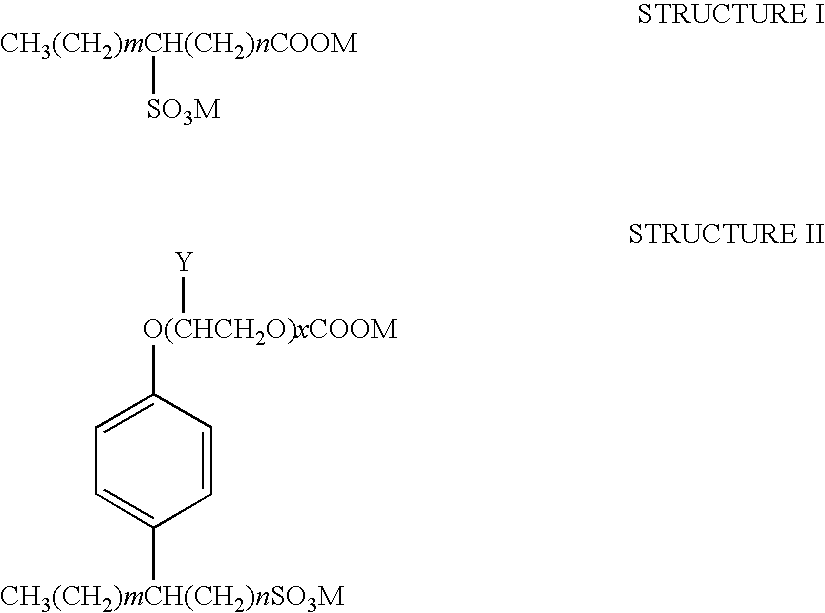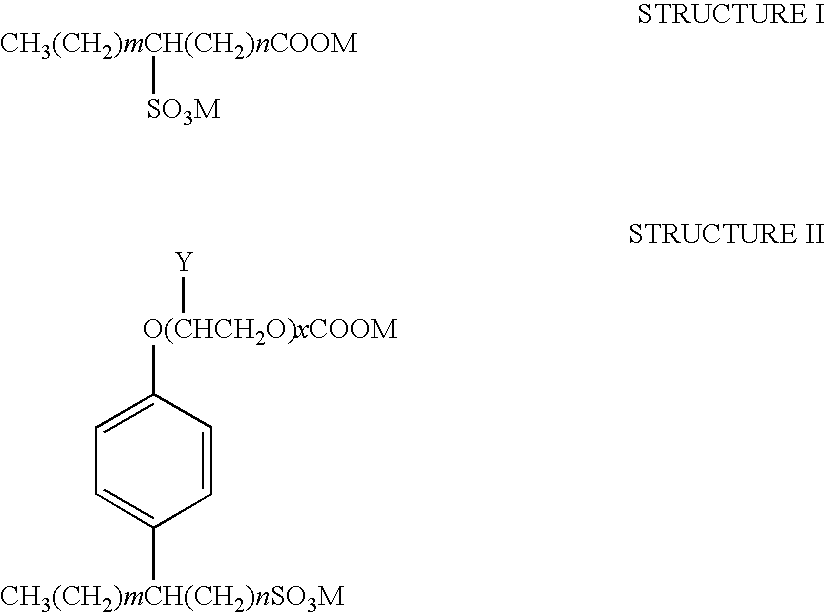Process for oil recovery using mixed surfactant composition
a technology of surfactant composition and oil recovery, which is applied in the direction of fluid removal, chemistry apparatus and processes, borehole/well accessories, etc., can solve the problems of unfeasible economic tertiary recovery process, incompatible brines containing high tds and divalents, and uneconomical amount of oil recovered by primary recovery
- Summary
- Abstract
- Description
- Claims
- Application Information
AI Technical Summary
Benefits of technology
Problems solved by technology
Method used
Image
Examples
Embodiment Construction
[0014]Detailed descriptions of the preferred embodiment are provided herein. It is to be understood, however, that the present invention may be embodied in various forms. Therefore, specific details disclosed herein are not to be interpreted as limiting, but rather as a basis for the claims and as a representative basis for teaching one skilled in the art to employ the present invention in virtually any appropriately detailed system, structure or manner.
[0015]The present invention is directed to the composition of salt and divalent cations tolerant surfactants containing a weak anionic functionality group and a strong anionic functionality group for recovering crude oil from subterranean hydrocarbon formation. The weak and strong anionic functionality groups may be combined into the same molecule as one or more bi-functional surfactants or mixtures of surfactants containing one or more strong anionic functionality group and one or more weak anionic functionality group may be used.
[0...
PUM
 Login to View More
Login to View More Abstract
Description
Claims
Application Information
 Login to View More
Login to View More - R&D
- Intellectual Property
- Life Sciences
- Materials
- Tech Scout
- Unparalleled Data Quality
- Higher Quality Content
- 60% Fewer Hallucinations
Browse by: Latest US Patents, China's latest patents, Technical Efficacy Thesaurus, Application Domain, Technology Topic, Popular Technical Reports.
© 2025 PatSnap. All rights reserved.Legal|Privacy policy|Modern Slavery Act Transparency Statement|Sitemap|About US| Contact US: help@patsnap.com



